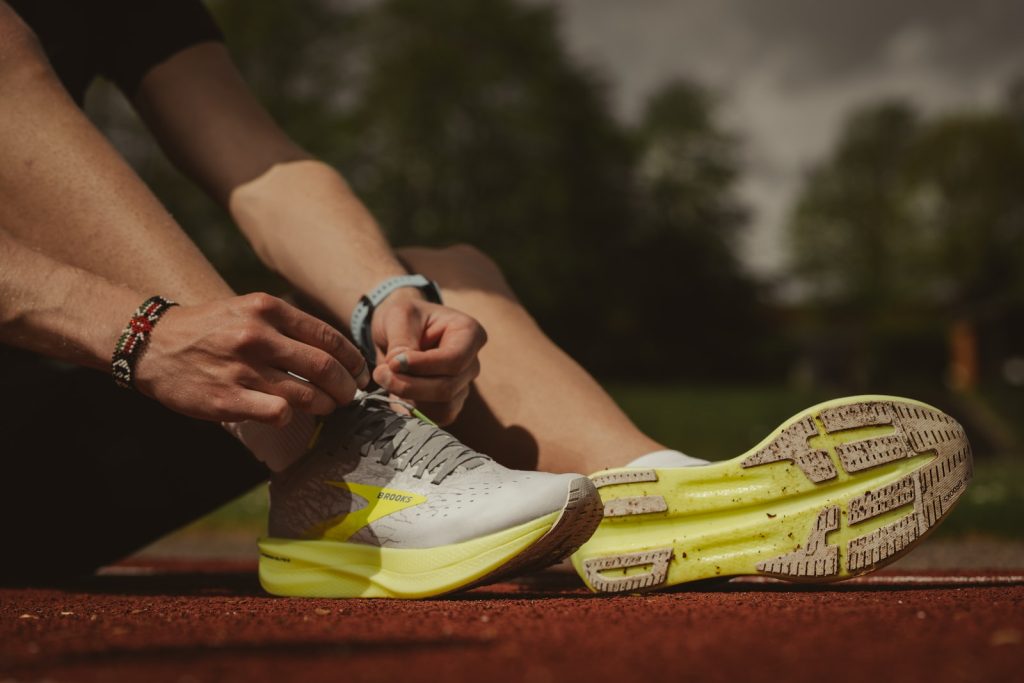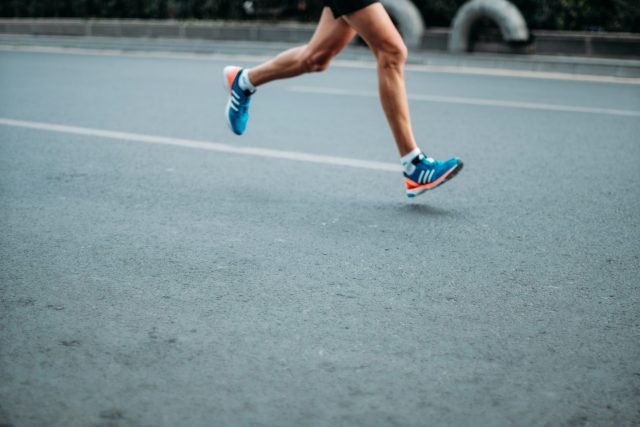Losing weight is something that many people struggle with, but running can be a great tool to help you reach your goals. Running for weight loss doesn’t have to be intimidating, and this article will provide a starter’s guide on how to get started. From understanding the basics of running for health and fitness to learning about equipment and nutrition, this article will give you the information you need to take your first steps toward achieving your goals.
The Benefits of Running
Running is a popular form of exercise for those looking to shed some extra pounds, and for a good reason. Not only is running a great cardiovascular workout, but it also has numerous benefits for weight loss. First and foremost, running burns a significant amount of calories, helping to create a calorie deficit that is necessary for weight loss. Additionally, running can help to increase your metabolism, which can help you burn more calories even when you’re not exercising. Running can also help to preserve muscle mass while losing fat, which is important for maintaining healthy body composition. Finally, running can help to reduce stress levels, which can help to curb emotional eating and improve overall well-being. These benefits make running an excellent choice for those looking to lose weight and improve their overall health.
Equipment Needed

One of the great things about running is that it doesn’t require a lot of equipment to get started. All you need is a good pair of running shoes, which should provide adequate support and cushioning to protect your feet and joints from the impact of running. The right shoes can also help prevent injuries and make running more comfortable. Choosing a pair of shoes appropriate for your foot type and running style is important, so consider getting fitted at a specialty running store.
While a good pair of shoes is the most important piece of equipment, a few other items can be helpful for runners. A comfortable and breathable pair of athletic shorts or pants can help keep you cool and dry during your run, while a moisture-wicking shirt can help to prevent chafing and irritation. Many runners also find it helpful to wear a hat or sunglasses to protect themselves from the sun and to carry a water bottle or hydration pack to stay hydrated during long runs.
Finally, some optional equipment can be useful for tracking your progress and improving your running performance. A GPS watch or smartphone app can help you track your distance, pace, and calories burned, while a heart rate monitor can help you stay within your target heart rate zone for optimal fat burning. Some runners also find it helpful to use foam rollers or massage balls to help with muscle recovery and prevent soreness.
Overall, while running doesn’t require a lot of equipment, investing in a good pair of shoes and a few other key items can help make your runs more comfortable and enjoyable and can help you achieve your weight loss and fitness goals.
Setting Goals
Setting goals is an important part of any weight loss or fitness program, and running is no exception. Specific, measurable, and achievable goals allows you to stay motivated and focused and track your progress over time.
When setting goals for running, it’s important to start with your ultimate objective. For example, you may want to lose some weight, run a specific race, or improve your overall health and fitness. Once you have identified your overarching goal, you can break it down into smaller, more achievable objectives.
For example, if you want to lose weight through running, you may start by setting a goal to run for 30 minutes thrice weekly. As you progress, you may increase your running time or distance or incorporate other types of exercise into your routine. By setting achievable goals and gradually building on your progress, you can avoid getting overwhelmed and improve your chances of success.
It’s also important to track your progress toward your goals. This can help you stay motivated and identify areas where you may need to adjust your approach. You can use a running log or app to record your runs, including your distance, time, and any notes about how you felt during your run. You can also track your weight loss progress and take measurements of your body to see how your body composition changes.
Remember, setting goals should be a positive and empowering process. Don’t compare yourself to others or get discouraged by encountering setbacks or obstacles. By staying focused on your own progress and celebrating your successes, you can achieve your running and weight loss goals and become a healthier, happier version of yourself.
Building Endurance
Building endurance is an essential aspect of running, especially if you want to use it as a tool for weight loss. Endurance training helps to increase your aerobic capacity, which is the ability of your heart and lungs to deliver oxygen to your muscles. This, in turn, helps you to run longer and faster, burn more calories, and lose weight more effectively.
To build endurance, starting with a solid foundation of regular, consistent running is important. This means gradually increasing your running time or distance over time rather than trying to do too much too soon. Aim to run at a comfortable pace and increase your mileage by no more than 10% per week.
In addition to building up your running volume, incorporating other forms of cardiovascular exercise can also help build endurance. Activities like cycling, swimming, or using an elliptical trainer can help to improve your aerobic fitness and reduce the impact on your joints.
Strength training can also help build endurance. Exercises that target your lower body, such as lunges, squats, and calf raises, can help to improve your running form and power. Working on your core and upper body strength can help you maintain good posture and prevent fatigue during long runs.
Finally, it’s important to fuel your body properly for endurance training. This means eating a balanced diet with complex carbohydrates, lean protein, and healthy fats. Staying hydrated is also crucial, especially during longer runs.
By following these tips, you can gradually build your endurance and improve your overall fitness, which can help you reach your weight loss and running goals. Remember, building endurance is a gradual process, so be patient and persistent, and celebrate your progress along the way.
Nutrition and Hydration
Nutrition and hydration are vital to a successful weight loss and running program. Proper nutrition can help fuel your runs and support muscle recovery while staying hydrated is essential for maintaining your energy levels and avoiding dehydration.
To ensure you are properly fueling your runs, eating a balanced diet that includes a mix of complex carbohydrates, lean protein, and healthy fats is important. Carbohydrates provide your body with the energy it needs to fuel your runs, while protein helps to support muscle growth and recovery. Healthy fats are important for providing sustained energy and promoting overall health.
Some good pre-run snacks include a banana, a slice of whole-grain toast with peanut butter, or a small bowl of oatmeal with fruit. For longer runs, you may also need to eat during your run to maintain your energy levels. Good options include sports gels, energy bars, or drinks containing carbohydrates and electrolytes.
Staying hydrated is also crucial for running and weight loss. Aim to drink at least eight glasses of water daily and more if you exercise regularly. Bring a water bottle or hydration pack with you during runs, especially on hot or humid days. If running longer than 60 minutes, consider adding an electrolyte drink to your hydration strategy to help replenish lost electrolytes.
In addition to focusing on what you eat and drink, paying attention to when you eat and drink is also important. Avoid eating a large meal before a run, which can cause digestive issues. Instead, aim to eat a light snack or meal at least 30 minutes before your run. And be sure to hydrate throughout the day rather than trying to drink a lot of water all at once.
Focusing on proper nutrition and hydration can improve your running performance, support your weight loss goals, and promote overall health and well-being.
Injury Prevention
Injury prevention is important for any runner, whether you are just starting out or have been running for years. Preventing injuries can help you stay on track with your weight loss and fitness goals, avoid setbacks, and enjoy running more consistently.
Listening to your body is one of the most important aspects of injury prevention. Slow down or stop and take a break if you feel pain or discomfort during a run. Ignoring pain can lead to more severe injuries, so it’s better to be cautious and address any issues early on.
Proper warm-up and cool-down routines can also help prevent injuries. Before running, take a few minutes to stretch and do some dynamic exercises to warm up your muscles. After your run, do some static stretches and foam rolling to help your muscles recover.
Investing in good running shoes can also help prevent injuries. Choose shoes that provide good support and cushioning, and replace them regularly as they wear out. You may also want to consider custom orthotics if you have foot or gait issues.
Cross-training is another important way to prevent injuries. By incorporating other forms of exercise, such as swimming, cycling, or strength training, you can help balance out the impact of running and reduce your risk of overuse injuries.
Finally, it’s important to gradually build up your running volume rather than trying too much too soon. Increasing your mileage by no more than 10% per week can help your body adjust gradually to the demands of running and reduce your risk of injuries.
Conclusion: Start Slow & Steady
In conclusion, running can be an effective tool for weight loss and fitness, but starting slow and steady is important to prevent injuries and build endurance. Set realistic goals, invest in good equipment, and focus on proper nutrition, hydration, and injury prevention. Listen to your body, and gradually increase your mileage and intensity over time, being mindful of any pain or discomfort. With patience, persistence, and a focus on long-term health and well-being, running can be a rewarding and enjoyable part of your weight loss and fitness journey. So, start slow and steady, and enjoy the many benefits of running for your mind and body.






























